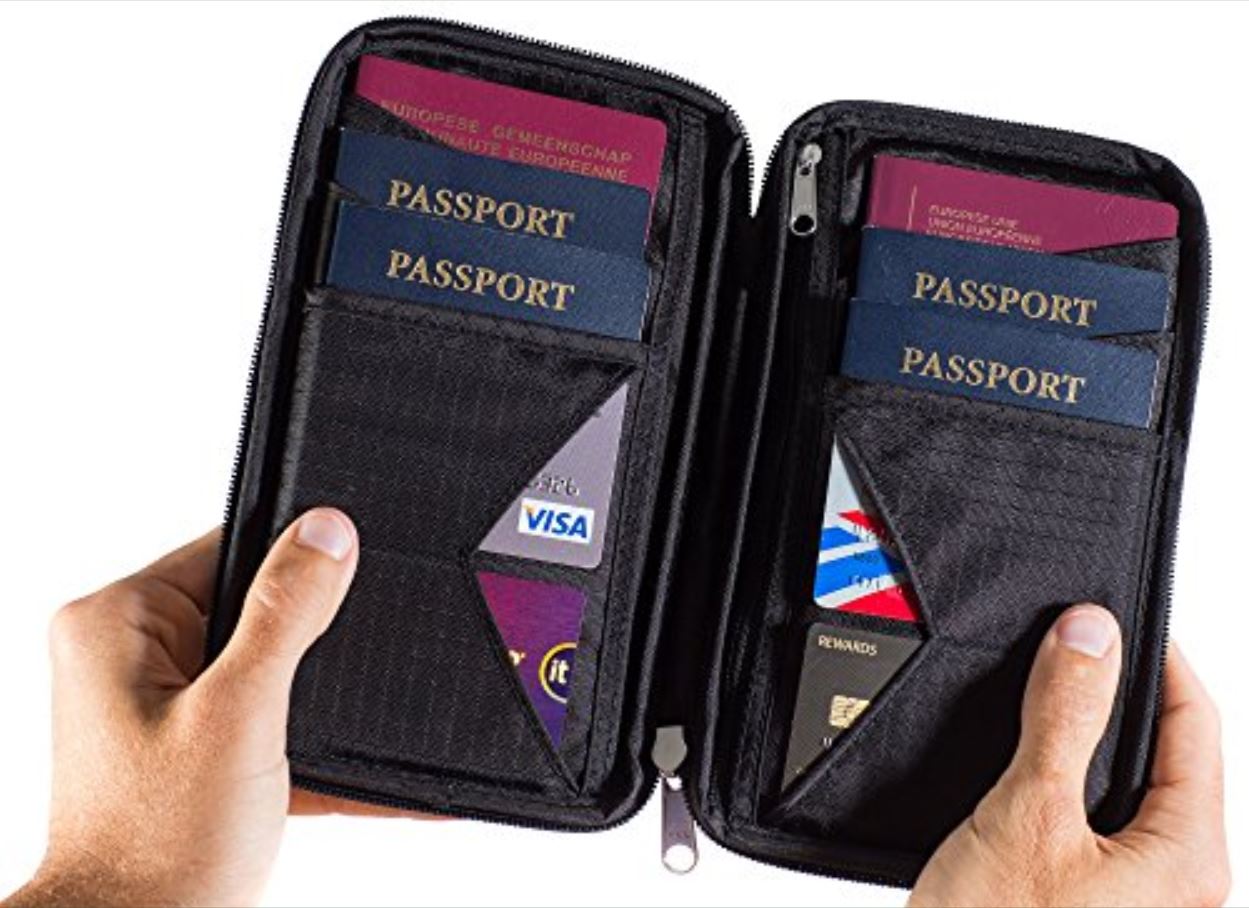Introduction
Radio Frequency Identification, commonly known as RFID, is a technology that has gained significant attention in various industries across the globe. It offers a speedy and efficient way to track and identify objects using radio waves. From inventory management to access control systems, RFID has revolutionized numerous applications.
RFID technology operates by utilizing electromagnetic fields to transfer data between a tag or label attached to an object and a reader. These tags contain a unique identifier and can store additional information such as product details, manufacturing date, and maintenance records.
The use of RFID has become pervasive across various sectors, including supply chain management, retail, healthcare, and transportation, to name a few. Its flexibility, reliability, and long-distance reading capabilities make it an invaluable tool in improving operational efficiency and enhancing the customer experience.
In this article, we will explore the concept of RFID, understand how it works, and delve into the fascinating world of data storage within RFID tags. We will also discuss the factors that affect the capacity of RFID tags and explore some real-world examples of data stored in these tags. Finally, we will look into the wide-ranging applications of RFID technology and its impact on our daily lives.
So, let’s embark on this journey of discovery to learn how much data RFID can hold and unravel the myriad possibilities this technology offers!
What is RFID?
Radio Frequency Identification (RFID) is an advanced technology that enables the identification and tracking of objects using radio waves. It is a wireless technology that involves the use of RFID tags or labels attached to objects and RFID readers to transmit and receive data.
The core components of an RFID system include the RFID tags or labels, readers, and the backend software infrastructure. RFID tags are small electronic devices that typically consist of a microchip and an antenna. The microchip stores the unique identifier and additional data associated with the object, while the antenna enables communication with the RFID reader.
RFID readers, also known as interrogators, are devices that emit radio waves and capture the information transmitted by the RFID tags. These readers can be handheld or fixed installations, depending on the specific application. When an RFID tag enters the range of a reader, the reader sends a signal to activate the tag, which then responds by transmitting its stored data back to the reader.
RFID technology has various advantages over traditional barcode systems. Unlike barcodes, RFID tags do not require line-of-sight scanning, allowing for automatic and quick data capture even in challenging environments. RFID tags can also store more data than barcodes, and their information can be updated and accessed wirelessly, making them highly versatile in a wide range of applications.
There are different types of RFID systems, including passive RFID, active RFID, and semi-passive RFID. Passive RFID tags do not have an internal power source and rely on the energy received from the RFID reader to activate and transmit data. Active RFID tags, on the other hand, have their power source and can continuously transmit data, providing real-time visibility and tracking. Semi-passive RFID tags have a powered microchip and draw energy from the reader for activation.
From asset tracking to inventory management, access control to healthcare, RFID technology offers numerous benefits in improving efficiency, reducing errors, and enhancing security across a wide range of industries. As we delve deeper into the world of RFID, we will explore how this technology works and the fascinating realm of data storage within RFID tags.
How RFID Works
RFID technology operates based on the principle of using radio waves to communicate between RFID tags and readers. The process involves three main steps: tag activation, data transmission, and data reception by the reader.
1. Tag Activation: When an RFID tag enters the range of an RFID reader, the reader emits radio waves or electromagnetic fields. These waves provide the necessary energy to the passive RFID tag, allowing it to power up and respond. Active RFID tags, on the other hand, have their power source and are always active and ready to communicate with the reader.
2. Data Transmission: Once activated, the RFID tag sends its unique identifier, also known as the Electronic Product Code (EPC), to the reader. The tag may also contain additional information such as the product name, manufacturing date, or serial number. This data is transmitted using radio waves and can be read by the RFID reader from a short to moderate distance, depending on the frequency and power of the reader.
3. Data Reception by the Reader: The RFID reader captures the transmitted data from the RFID tag using its built-in antenna. The reader then processes this data and sends it to a backend system for further analysis or action. The backend system can be a computer database, inventory management software, or any other application that utilizes the RFID data for tracking, inventory control, or authentication purposes.
It is important to note that RFID technology offers different frequencies, including low frequency (LF), high frequency (HF), and ultra-high frequency (UHF). The choice of frequency depends on the specific application requirements. LF RFID operates at frequencies around 125-134 kHz and is commonly used in proximity card systems. HF RFID operates at frequencies around 13.56 MHz and is often used in applications such as access control and payment systems. UHF RFID operates at frequencies between 860-960 MHz and is widely used in inventory management, supply chain, and asset tracking.
RFID technology provides numerous benefits, including fast and accurate data capture, real-time tracking, and improved operational efficiency. It has found applications in various industries, such as retail, healthcare, logistics, and manufacturing. The ability to wirelessly communicate with objects and retrieve valuable data makes RFID a powerful tool in automating processes, reducing errors, and enhancing overall productivity.
Now that we understand the basic workings of RFID technology, let’s explore the types of RFID tags and the storage capacity they offer for storing data.
Types of RFID Tags
RFID tags, also known as transponders, come in various types and form factors, each designed to suit specific applications and environments. The three main types of RFID tags are passive, active, and semi-passive.
1. Passive RFID Tags: Passive RFID tags do not have an internal power source. Instead, they rely on the energy emitted by the RFID reader to activate and transmit data. When the reader’s electromagnetic field energizes the tag, it uses that energy to power up and respond with its information. These tags are cost-effective and have a smaller form factor, making them suitable for applications like inventory management, access control, and retail item tracking.
2. Active RFID Tags: Active RFID tags have their power source and transmit signals continuously, even without the presence of a reader. They typically have a longer range and higher data transmission capabilities compared to passive tags. Active tags are commonly used in applications that require real-time tracking, such as vehicle tracking, asset monitoring, and personnel identification in large facilities.
3. Semi-Passive RFID Tags: Semi-passive RFID tags, also known as battery-assisted passive (BAP) tags, have a powered microchip within the tag that requires a minimal internal power source. This power source primarily assists in running the microchip’s circuitry, while the tag still relies on the reader’s energy for activation and transmission. Semi-passive tags strike a balance between the cost-effectiveness of passive tags and the extended range and features of active tags.
RFID tags can also be differentiated based on the frequency range they operate in, such as low frequency (LF), high frequency (HF), and ultra-high frequency (UHF).
1. LF RFID Tags: LF RFID tags operate at frequencies between 125-134 kHz. They have a shorter read range and are commonly used in applications such as access control, animal tracking, and close-range identification systems.
2. HF RFID Tags: HF RFID tags operate at a frequency of about 13.56 MHz. They offer a moderate read range and are widely used in applications like contactless payment systems, library book tracking, and electronic ticketing.
3. UHF RFID Tags: UHF RFID tags operate in the ultra-high frequency range of 860-960 MHz. These tags provide a longer read range and are commonly used in supply chain management, inventory tracking, and asset management due to their ability to track multiple tags simultaneously and higher data transmission rates.
The choice of RFID tag type depends on the specific requirements of the application. Factors to consider include read range, data storage capacity, power consumption, and environmental factors. Understanding the different types of RFID tags available enables organizations to select the most suitable tags for their unique needs.
Now that we have explored the types of RFID tags, let’s delve into the fascinating world of data storage within RFID tags and examine their capacity to hold information.
Data Storage in RFID Tags
RFID tags are capable of storing information beyond just a unique identifier. The amount of data that can be stored in an RFID tag depends on factors such as the type of tag, the memory capacity of the tag, and the specific application requirements.
RFID tags can be categorized into two main types based on their memory capacity: read-only and read-write tags.
Read-Only RFID Tags: Read-only RFID tags come with pre-programmed data that cannot be modified or overwritten. These tags typically contain a unique identifier and may have additional manufacturer or product information. Read-only tags are commonly used for tracking and identification purposes, such as in inventory management or access control systems.
Read-Write RFID Tags: Read-write RFID tags have the capability to store and update data multiple times. These tags provide the flexibility to add, modify, or delete information as required. Read-write tags often have more memory capacity compared to read-only tags, enabling them to store various types of data, including additional details about the object, maintenance records, and timestamps. They are commonly used in applications such as supply chain management, asset tracking, and product authentication.
The memory capacity of an RFID tag is usually measured in bits or bytes. The most common memory capacities for RFID tags include:
- Low-Capacity Tags: These tags typically have memory capacities ranging from a few kilobits (Kb) to a few kilobytes (KB). They are suitable for storing basic information like the unique identifier, product codes, or simple descriptions.
- Medium-Capacity Tags: Medium-capacity tags have memory capacities ranging from a few kilobytes (KB) to several kilobytes (KB). They provide more storage space for storing detailed information about the object, such as manufacturing dates, batch numbers, or warranty information.
- High-Capacity Tags: High-capacity tags offer larger storage capacities, typically ranging from several kilobytes (KB) to several megabytes (MB). These tags can store extensive data sets, including documents, manuals, or multimedia files. High-capacity tags are commonly used in applications that require extensive information, such as medical records or complex supply chain management systems.
It is important to note that the memory capacity of an RFID tag can vary based on the chip used, the tag manufacturer, and the specific model. Additionally, the available memory is often shared between the unique identifier (EPC) and the user-defined data.
When considering the data storage capacity of RFID tags, it is crucial to strike a balance between the amount of data required and the cost and functionality of the tag. Choosing the right tag with adequate memory capacity ensures that the desired information can be stored and accessed efficiently, enabling seamless tracking, identification, and data management processes.
Now that we have explored the data storage capabilities of RFID tags, let’s dive into the factors that can affect the capacity of RFID tags.
Capacity of RFID Tags
The capacity of RFID tags refers to the amount of data that can be stored within the tag’s memory. The capacity varies based on the type of tag, the memory technology used, and the specific tag model. RFID tags can have different memory capacities, ranging from a few kilobits (Kb) to several megabytes (MB).
There are several factors that can affect the capacity of RFID tags:
- Memory Technology: The memory technology used in RFID tags plays a crucial role in determining their capacity. Different memory technologies, such as Electrically Erasable Programmable Read-Only Memory (EEPROM) or Flash memory, have varying storage capabilities. Flash memory-based tags typically offer higher storage capacities compared to EEPROM-based tags.
- Chip Size: The physical size of the RFID chip can impact the available memory capacity. Smaller chips may have limited memory capacity, while larger chips can accommodate more data storage. It is important to consider the required amount of data when selecting an RFID tag with the appropriate chip size.
- Read-Only vs. Read-Write: Read-only RFID tags usually have fixed, pre-programmed data that cannot be modified or updated. This limited data storage capacity is sufficient for applications that only require basic identification or tracking information. On the other hand, read-write RFID tags allow for multiple read and write operations, providing more flexibility in storing and updating data as needed.
- Memory Partitioning: Some RFID tags may have partitions within their memory, allowing for separate sections to store different types of data. This partitioning can help efficiently manage and organize the stored information, allowing for more effective utilization of the available memory space.
- Data Encoding Methods: The method of encoding data onto the RFID tag can impact the data storage capacity. Different encoding techniques, such as ASCII, Binary, or hexadecimal, can consume varying amounts of memory space. It is important to consider the data encoding method to optimize the use of the available memory.
It is crucial to assess the specific needs and requirements of an application when determining the capacity of RFID tags. For applications where a large amount of data storage is necessary, such as document management or multimedia files, high-capacity RFID tags with several megabytes (MB) of memory capacity would be suitable. For applications that require basic identification or tracking purposes, lower-capacity tags with a few kilobits (Kb) or kilobytes (KB) of memory would suffice.
Additionally, advancements in RFID technology continue to improve the capacity of RFID tags. With ongoing development, we can expect to see even higher-capacity tags with improved memory capabilities in the future.
Now that we have explored the capacity of RFID tags, let’s move on to examining the factors that can influence the capacity of RFID tags.
Factors Affecting RFID Tag Capacity
The capacity of an RFID tag, referring to the amount of data it can store, can be influenced by various factors. Understanding these factors is essential when selecting the appropriate RFID tag for a specific application. Here are the key factors that affect RFID tag capacity:
- Memory Technology: The type of memory technology used in RFID tags significantly impacts their capacity. Different memory technologies, such as EEPROM (Electrically Erasable Programmable Read-Only Memory) and Flash memory, have varying storage capacities. Flash memory-based tags typically offer larger storage capacities compared to EEPROM-based tags.
- Chip Size: The physical size of the RFID chip plays a role in determining the available memory capacity. Smaller chips might have limited memory capacity, while larger chips can accommodate more data storage. Consider the required amount of data when selecting an RFID tag with an appropriate chip size.
- Data Encoding: The method of encoding data onto the RFID tag can affect the data storage capacity. Different encoding techniques, such as ASCII, Binary, or hexadecimal, can consume varying amounts of memory space. Choosing an efficient data encoding method can optimize the use of available memory.
- Memory Partitioning: Some RFID tags have memory partitions, allowing for separate sections to store different types of data. Partitioning helps manage and organize stored information, maximizing memory utilization. By structuring and allocating memory partitions effectively, more data can be stored within an RFID tag.
- Application Requirements: The specific requirements of the application can influence the choice of RFID tag and its capacity. Applications that require extensive data storage, such as document management or multimedia files, may need RFID tags with larger memory capacities. On the other hand, applications that require basic identification or tracking purposes may require lower-capacity tags.
It is crucial to consider these factors and assess the needs of the application to determine the appropriate RFID tag capacity. By selecting the right tag with sufficient memory capacity, data can be stored and accessed efficiently, ensuring the seamless operation of the RFID system.
Advancements in RFID technology continue to push the boundaries of tag capacity, offering more options with higher memory capacities. As technology evolves, we can expect to see RFID tags with even larger storage capacities, providing greater flexibility and efficiency in various applications.
Now that we have explored the factors affecting RFID tag capacity, let’s move on to examining some examples of data stored in RFID tags.
Examples of Data Stored in RFID Tags
RFID tags have the capability to store various types of data, beyond just a unique identifier. The specific data stored in an RFID tag depends on the application requirements and can vary widely across different industries. Here are some examples of the types of data that can be stored in RFID tags:
- Product Information: RFID tags are commonly used in retail and inventory management to store product-specific details. This can include information such as the product name, description, manufacturer, model number, and any other relevant specifications. Having this information readily accessible in the RFID tag allows for efficient inventory tracking and management.
- Manufacturing and Quality Control: RFID tags in manufacturing facilities often store data related to the production process. This can include the date and time of manufacture, batch numbers, quality control test results, and compliance certifications. By storing this information in the RFID tags, manufacturers can easily track and trace products throughout the supply chain.
- Maintenance and Service Records: For equipment and machinery, RFID tags can be used to store maintenance and service records. This can include details such as the date of last maintenance, service history, recommended maintenance schedules, and any repair or replacement information. Having this information readily accessible simplifies maintenance management and prolongs the lifespan of assets.
- Patient Information in Healthcare: RFID tags are increasingly used in healthcare to store patient-specific information. This can include medical records, allergies, medication history, and any other relevant healthcare data. Storing this information in RFID tags allows for quick and accurate access to patient information, facilitating efficient healthcare processes and enhancing patient safety.
- Supply Chain and Logistics: In supply chain and logistics, RFID tags can store a wealth of data related to the movement of goods. This can include information such as the origin and destination of the shipment, transportation details, customs clearance information, and proof of delivery. Storing this information in RFID tags improves visibility and provides real-time tracking capabilities throughout the supply chain.
These are just a few examples of the data that can be stored in RFID tags. The versatility of RFID technology allows for the customization of data storage based on the specific needs of different industries and applications. By leveraging the data stored in RFID tags, businesses can streamline processes, improve efficiency, and enhance overall productivity.
Now that we have explored some examples of the data stored in RFID tags, let’s explore the wide-ranging applications of RFID technology.
Applications of RFID Technology
RFID technology has found widespread applications across various industries due to its versatility and numerous benefits. Let’s explore some of the key areas where RFID technology is being applied:
- Supply Chain Management: RFID technology plays a vital role in supply chain management. It enables real-time tracking, inventory control, and improved visibility of goods throughout the supply chain. RFID tags attached to packages or pallets provide accurate and automated data capture, reducing errors and enhancing overall supply chain efficiency.
- Retail: RFID technology has transformed retail operations by improving inventory accuracy, optimizing stock levels, and enhancing the overall customer experience. Retailers use RFID tags to track individual products, improve stock replenishment, prevent stockouts, and streamline the checkout process, ensuring accurate and efficient inventory management.
- Healthcare: In healthcare, RFID technology is used for asset tracking, patient identification, and medication management. RFID tags attached to medical equipment enable fast and accurate location tracking, reducing equipment loss. RFID wristbands or cards enhance patient identification, streamlining check-in processes and improving patient safety. Medication cabinets equipped with RFID technology automate inventory management and help prevent medication errors.
- Access Control and Security: RFID technology is widely used for access control systems, providing secure and convenient entry for personnel. RFID cards or key fobs allow authorized individuals to gain access to restricted areas, replacing traditional keys or access codes. In addition, RFID technology is utilized in asset tracking and anti-theft systems to protect valuable assets by triggering alarms if tagged items are moved without proper authorization.
- Logistics and Transportation: RFID technology is integral to logistics and transportation operations, improving tracking and traceability of goods. RFID tags attached to packages or shipping containers enable automated data capture during the movement of goods, ensuring efficient supply chain logistics, and enhancing shipment visibility. RFID technology is also used in toll collection systems to enable seamless and convenient payment processing.
- Manufacturing: RFID technology plays a critical role in manufacturing processes, enabling asset tracking, inventory management, and quality control. RFID tags attached to products or components help track their status throughout the manufacturing process, streamlining production workflows and minimizing errors. RFID technology also aids in real-time inventory management, ensuring that the right components or materials are available at the right time.
These are just a few examples of the wide-ranging applications of RFID technology. The versatility and flexibility of RFID make it a valuable tool in improving operational efficiency, streamlining processes, and enabling seamless data capture and analysis in various industries.
As technology continues to advance, we can expect to see further innovations in RFID, leading to even more diverse and impactful applications across industries.
Now that we have explored the applications of RFID technology, let’s conclude our journey into understanding how much data RFID can hold.
Conclusion
RFID technology has revolutionized various industries by offering a fast, efficient, and reliable way to track and identify objects using radio waves. From supply chain management to retail, healthcare to logistics, the applications of RFID technology are vast and diverse.
In this article, we explored the basic principles of RFID technology and how it works. We learned about the different types of RFID tags – passive, active, and semi-passive – and how they store data in their memory. We also discussed factors that affect RFID tag capacity, such as memory technology, chip size, data encoding, memory partitioning, and specific application requirements.
Furthermore, we explored some examples of the data that can be stored in RFID tags, ranging from product information and manufacturing details to patient records and supply chain data. The ability to store and access relevant data within RFID tags enables organizations to streamline processes, improve efficiency, and enhance the overall customer experience.
We also examined the wide-ranging applications of RFID technology, including supply chain management, retail, healthcare, access control, logistics, and manufacturing. From improving inventory control and asset tracking to enhancing patient safety and optimizing production workflows, RFID technology has proven to be a valuable tool in diverse industries.
As technology continues to evolve, we can expect the capacity of RFID tags to increase, allowing for even more data storage possibilities. The ongoing advancements in RFID technology will further expand the potential applications and benefits of this technology.
In conclusion, RFID technology has transformed the way we track, identify, and manage objects. Its flexibility, efficiency, and wide-ranging applications make it a fundamental component in many industries. By leveraging the data stored within RFID tags, businesses can enhance productivity, improve accuracy, and gain valuable insights into their operations.

























